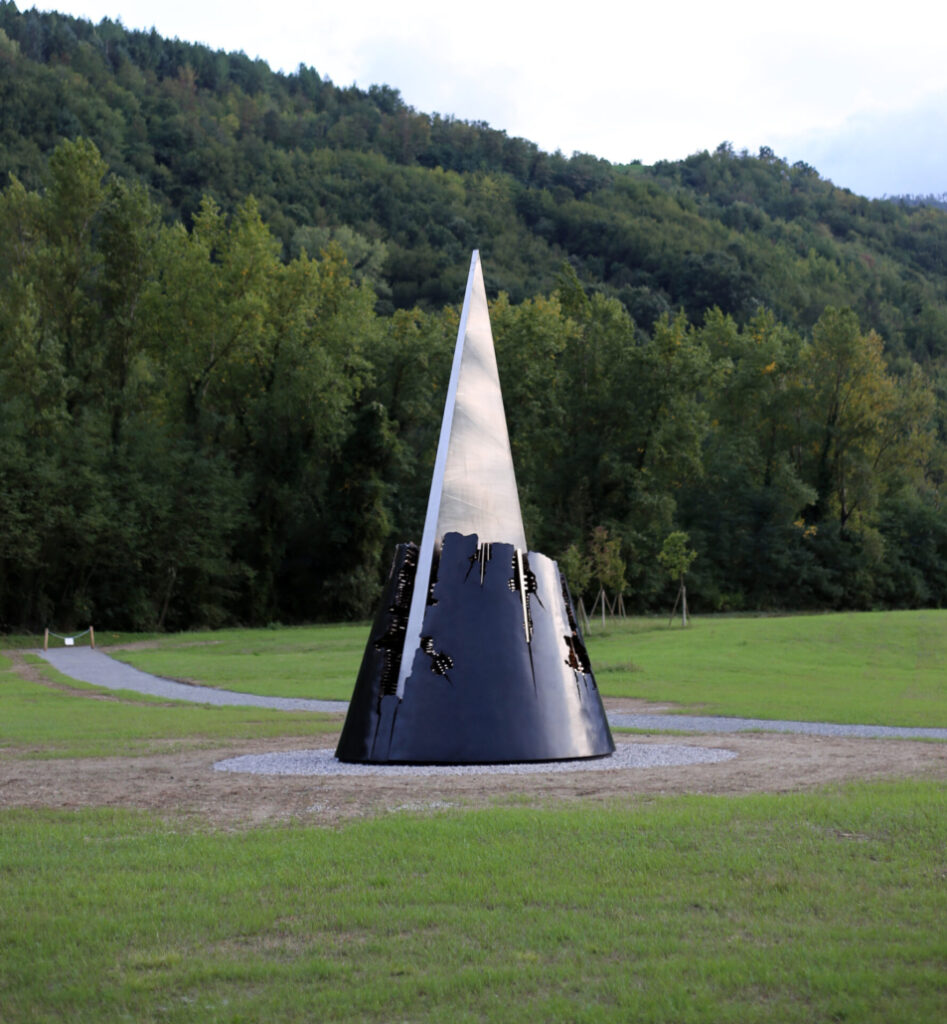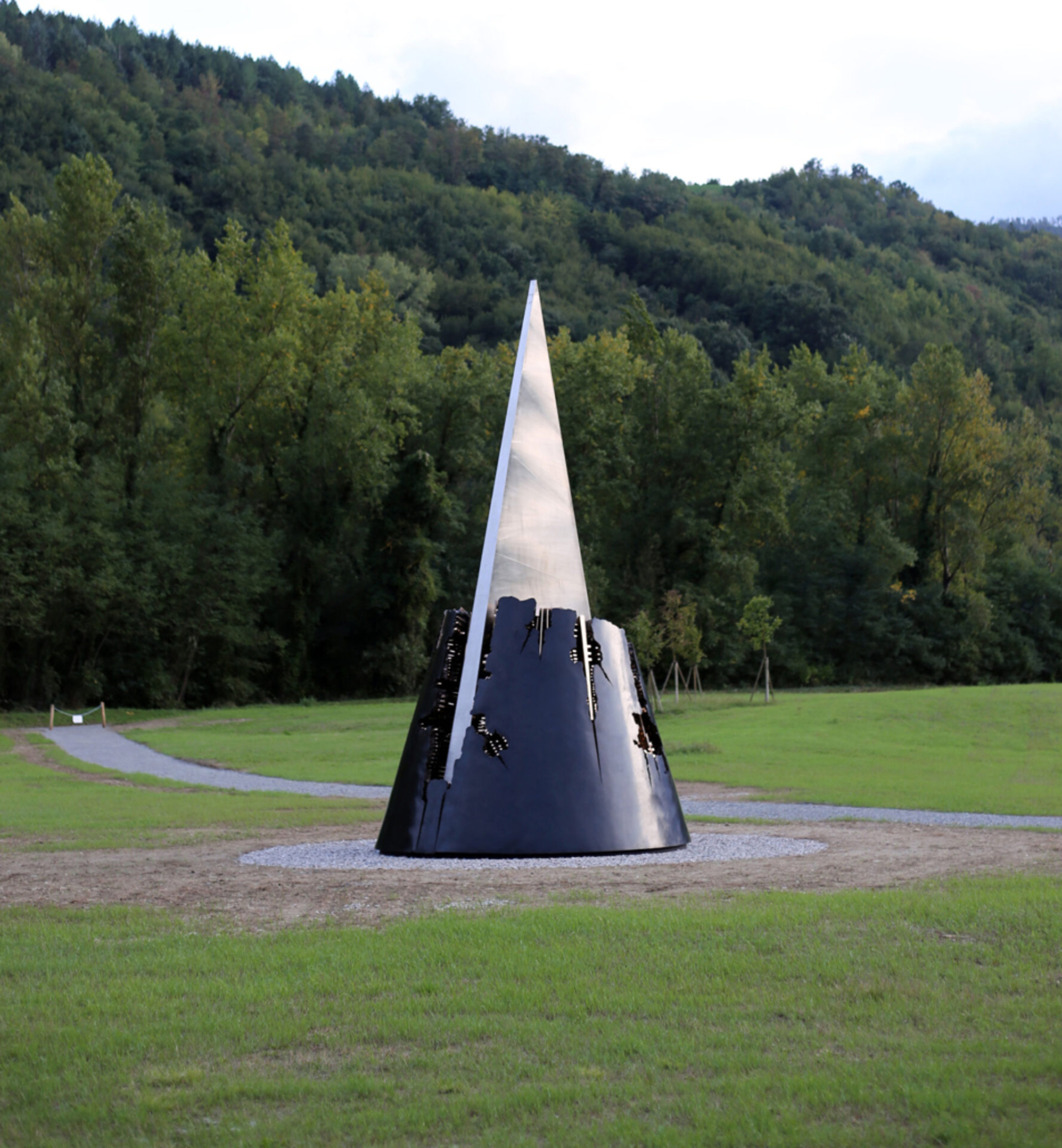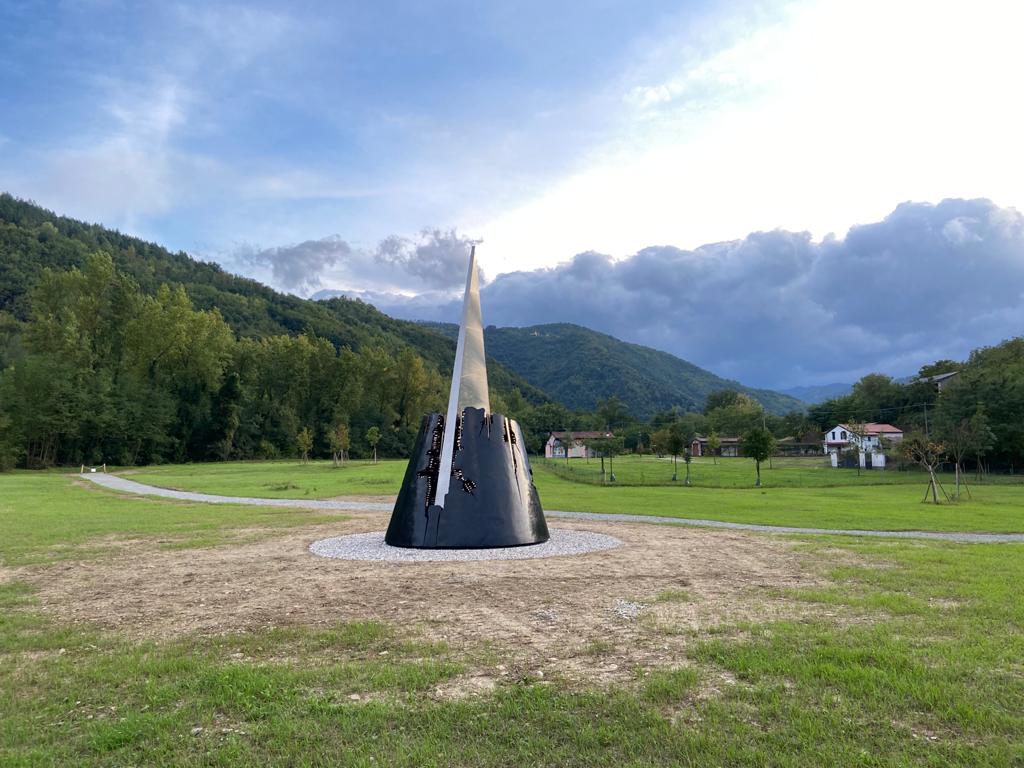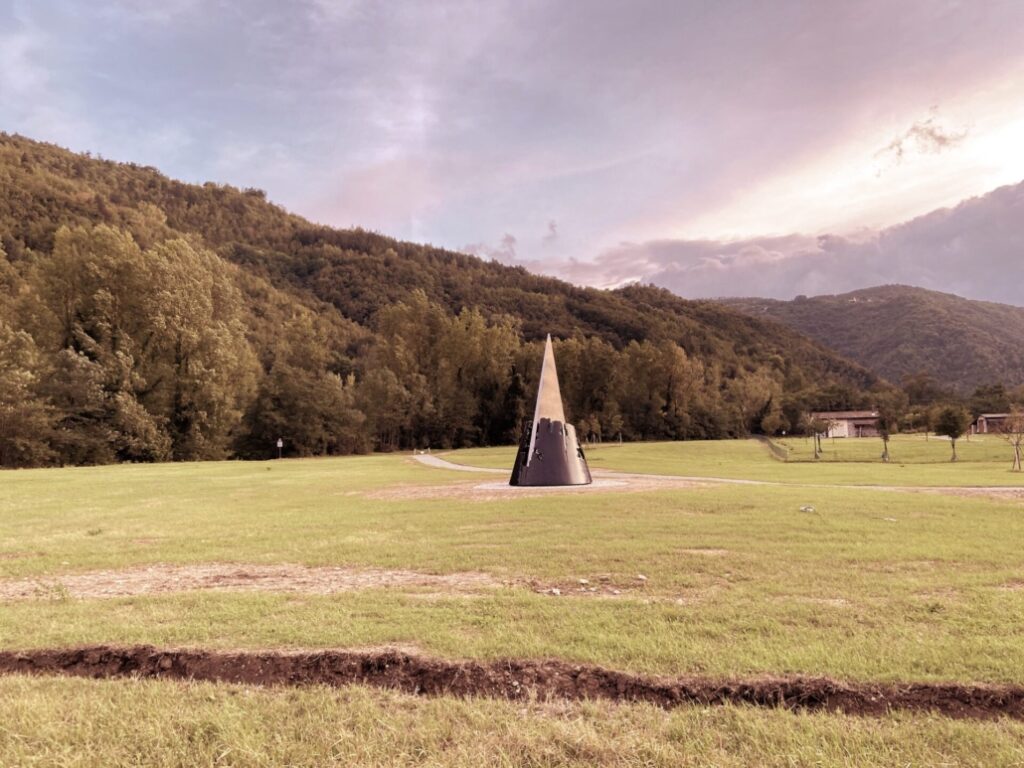
Arnaldo Pomodoro
Cono tronco, 1972
bronze and steel, 620 × ø 360 cm
In 1972 Cono tronco was installed in the Binghamton Government Central Plaza in the city of the same name near New York, where there were already sculptures by twentieth-century artists, including Louise Nevelson. “It is a bronze cone – says Pomodoro – with a base diameter of over 3 metres, sectioned and pierced in the center by a triangular blade in shiny stainless steel which ends with a point pointing upwards. The mirrored surface of the steel creates a dynamic effect with the play of reflections which contrasts with the sense of static nature and strength of the truncated, torn and corroded cone.” The Euclidean geometry of the cone has been affected by a dense viral web that has worn away the material from the top almost to the base, shiny on the surface but wounded by deep scars. A steel blade, a schematization of the truncated cone, shining and sharp, fits together, cutting the bronze and resisting the corrosion of the bronze intact. But for the sculptor the triangle is more than a simple geometric shape, it is the symbol of a stabilized power, whose tension is ideally represented by the difference between the materials. Mark Rosenthal observes: “The artist also speaks of the triangle as an internal “soul”. But, as always, Pomodoro hopes for a broadening of the meaning. It refers the sculpture to the Egyptian tradition, in which the Pharaoh sacrificed many lives for the formation of the pyramids. For him, the triangular shape represents the presence of a stabilized power in the pyramid.” On the use of materials Flaminio Gualdoni writes: "the material gap between steel and bronze amplifies that between the expectation of perfection and the Heraclitean dark formation". The formal rigor and geometry of the lines merge, in the same plastic body, with a maze of fractal and bacterial concretions. Order and disorder confront the surrounding space in a dialectic of reflections and refractions, solids and voids, archaism and modernity.
Do you want to know more about this work?
Go to the Catalogue Raisonné online!








